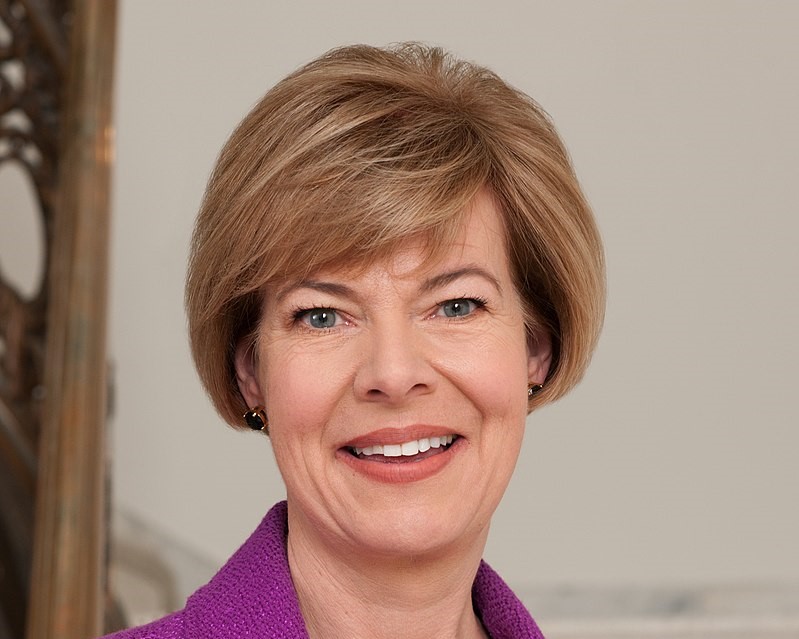Moved out of his district, Republican Sen. Romaine Quinn says he will decide later on whether to run again in 2026, and if so, where.

By Hina Suzuki, THE BADGER PROJECT
A Tyrannosaurus Rex took a big blue bite out of the 73rd Assembly District in Douglas County and spit it into the neighboring district.
That’s how some commenters described the change to the 73rd after Republicans redrew it before the 2022 election.
The GOP swapped those bluer areas with rural, Republican-leaning parts of Burnett County and Washburn County to make the district more red.
The purpose of the GOP’s reshaping of the 73rd was to “dilute the Democratic stronghold of Douglas County and part of Washburn County, ” Alisa Von Hagel, a political science professor at UW-Superior, wrote in an email to The Badger Project.
For 50 years, Democrats held the 73rd Assembly District. But after the GOP redrew the boundaries before the 2022 election, Republican Angie Sapik won the seat. The district’s vote share became competitive, with a 53% Republican lean, according to an analysis by John Johnson, a research fellow at Marquette University Law School who specializes in redistricting.

Now, with the new legislative maps drawn by Democratic Gov. Tony Evers and approved by the Republican-controlled state legislature in 2024, the 73rd leans to the political left, according to Johnson’s analysis. Evers included the northern halves of Douglas, Bayfield, and Ashland counties in the district, areas that run much more blue compared to the rural areas included in the old district, Von Hagel said.
“The new redistricting maps approved by the Wisconsin legislature will have a significant impact for representation from northern Wisconsin and specifically for the 73rd Assembly District,” Von Hagel said.
Sapik has already announced that she will not seek reelection. She has since been elected to the Douglas County Board.
The old legislative districts were drawn by Wisconsin Republicans who ignored the redistricting guidelines called Communities of Interest, said Ryan Weichelt, a geography professor at UW-Eau Claire who specializes in redistricting. The Communities of Interest concept identifies and consolidates geographical areas that share common interests and concerns affected by legislation. They can be based on shared histories, economic interests, and cultural commonalities, Weichelt said.
WANT OUR STORIES DIRECTLY SENT TO YOUR INBOX? Subscribe to our monthly newsletter below.
The newly-drawn 73rd Assembly District adheres to Communities of Interest better than the old one, which was designed to “make it stronger for the Republican candidate,” Weichelt said.
“The new 73rd District covers the entire shore of Lake Superior, thus maintaining a common geography from Superior to Bayfield, as well as maintaining the Native American areas,” he said. “This will turn the district into a likely-Democratic district.”
Evers’ new legislative maps also significantly altered the boundaries of the 25th Senate District, which now encompasses the cities of Superior, Ashland, Bayfield, Hayward, Spooner and Washburn along or near the coast of Lake Superior.
The district remains Republican-leaning, but it has become more Democratic than it was, Von Hagel said.

This reshaping resulted in the ejection of the home of Sen. Romaine Quinn, the Republican representing the 25th District, outside its new boundaries. However, he will hold the seat until he must run for reelection in 2026.
Asked if he will run in 2026 and in which district, Quinn wrote in an email to The Badger Project that his current term is not yet halfway completed, and that “his priority right now is doing that job and serving constituents.”
“If I choose to continue to serve in the State Senate after this term, I will make a decision at that time which district to run in,” Quinn said.
Across the state and in northwestern Wisconsin, the maps give Democrats a better chance at winning, experts say.
“Democratic votes in northern Wisconsin are no longer diluted, as had previously been the case,” Von Hagel said. “The likelihood of Democratic representatives in the state Assembly and Senate is much more likely and residents will see a change in their representation in the 2024 and 2026 elections.”
This story was funded by the Wirtanen Fund at the Duluth Superior Area Community Foundation.
The Badger Project is a nonpartisan, citizen-supported journalism nonprofit in Wisconsin.
SUPPORT OUR IMPORTANT WORK KEEPING TABS ON THE POWERFUL IN WISCONSIN! CLICK HERE TO DONATE!





